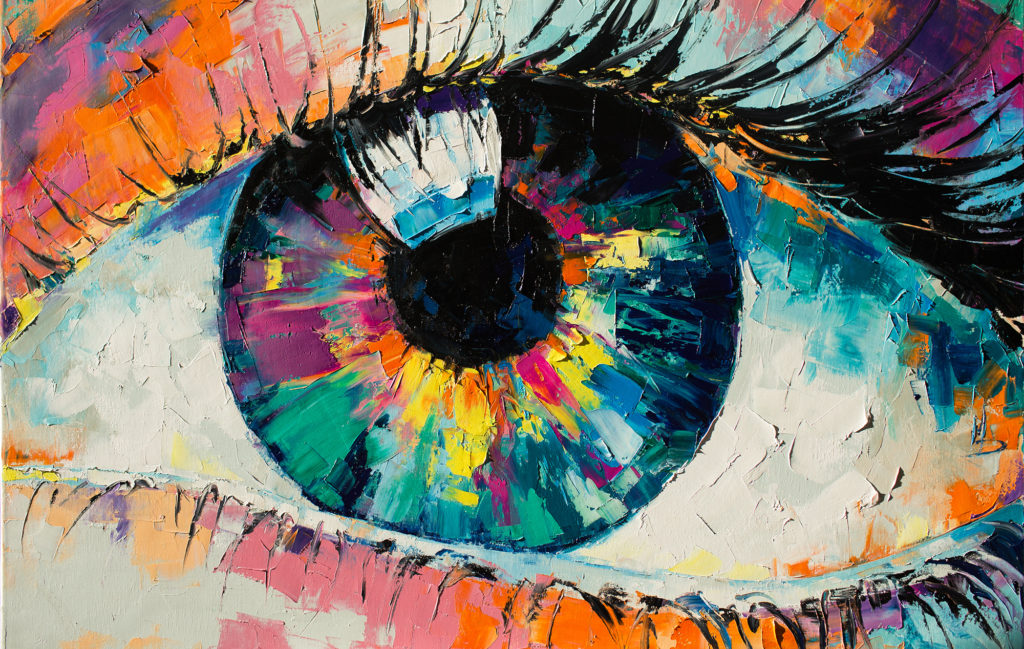The Junction of Politics and Aesthetic Appeals in Trump Art
The Junction of Politics and Aesthetic Appeals in Trump Art
Blog Article
Looking Into the Diverse Globe of Artistic Expression: From Surrealism to Abstract Realistic Look
In the world of creative expression, from the dreamlike landscapes of surrealism to the detailed play of light and type in abstract realism, artists have constantly pushed the limits of imagination and creativity. As we explore the diverse globe of art, we are provided with a tapestry of styles, strategies, and ideologies that test our understanding and provoke contemplation.
Surrealism: Letting Loose the Subconscious
Surrealism, a progressive creative movement of the 20th century, looked into the midsts of the subconscious, unveiling a globe of dream-like images and unique associations. Spearheaded by musicians like Salvador Dali, René Magritte, and Joan Miró, Surrealism sought to challenge the standard ways of recognizing and seeing art. Via techniques such as automatism and dream evaluation, Surrealist musicians intended to tap right into the subconscious mind to disclose hidden truths and desires.
Among the key aspects of Surrealism was the focus on the illogical and the astonishing. By integrating unanticipated components in their works, Surrealist musicians intended to develop a sense of disorientation and shock in the audience. This disturbance of reasoning and reason was implied to provoke a much deeper exploration of the subconscious and the secrets of the human subconscious.
Abstract Realism: Redefining Understanding
Testing standard creative limits, Abstract Realistic look redefines understanding through the combination of recognizable elements with abstract types. This ingenious approach to art incorporates the representational precision of realistic look with the innovative freedom of abstraction, supplying audiences an unique aesthetic experience that prompts them to examine their perception of fact.
In Abstract Realistic look, artists aim to catch the significance of their subjects while additionally instilling their deal with a feeling of depth and intricacy with abstract elements. By mixing the accustomed to the strange, these musicians welcome audiences to engage with their items on multiple levels, encouraging them to discover the subtleties of appearance, color, and form.

Cubism: Fragmenting Fact
Making use of geometric forms and fragmented viewpoints, Cubism transformed the imaginative depiction of truth in the early 20th century. This strategy not only deconstructed reality yet also stressed the flatness of the canvas, paving the way for future abstract art movements.

Cubism can be classified right into two major phases: Analytical Cubism, identified by single color design and detailed, fragmented types; and Synthetic Cubism, which incorporated collection aspects and brighter colors into the make-ups. With these distinct phases, Cubism influenced not only paint yet likewise style, sculpture, and layout. trump art. Its impact reverberated across the art globe, inspiring artists to explore new methods of translating and representing the globe around them
Expressionism: Emotions on Canvas
Discovering the depths of human feelings through vivid and expressive brushstrokes, Expressionism arised as a profound creative motion in the early 20th century. Unlike previous art activities that focused on showing the outside world, Expressionism looked into the internal realm of the artist's psyche, aiming to stimulate raw feelings and provoke natural feedbacks from visitors.
Expressionist artists, such as Edvard Munch, Egon Schiele, and Emil Nolde, turned down conventional notions of appeal and realistic look for distorting type and color to convey subjective sensations. Using exaggerated brushwork, vibrant my website colors, and distorted numbers helped develop a sense of anxiousness, alienation, or passion in their jobs.
One of the most famous examples of Expressionism is Munch's "The Scream," which catches the intense stress and anxiety and despair of contemporary life with its swirling, altered number against a blood-red sky. With their emotionally charged works, Expressionist artists looked for to test conventional imaginative norms and offer a home window into the unstable depths of the human heart.
Contemporary Art: Evolving Point Of Views

Among the specifying characteristics of contemporary art is its constant advancement and ability to adapt to changing social landscapes. Musicians are progressively including modern technology right into their practice, obscuring the lines in between the physical and electronic worlds. This combination of mediums enables for innovative methods of storytelling and engaging with target markets in an extra interactive way.
Additionally, modern art commonly offers as a platform for social discourse, attending to pushing issues such as identification, national politics, and the atmosphere. Musicians are using their work to prompt and trigger essential conversations idea, dropping light on the intricacies of the world we live in. As point of views remain to evolve, contemporary art remains a prominent and dynamic force in forming our cultural landscape.
Final Thought
Finally, the world of artistic expression includes a vast array of styles and motions, each with its own distinct technique to sharing meaning and emotion. From surrealism's exploration of the subconscious to abstract realism's redefining of understanding, and from cubism's fragmentation of truth to expressionism's representation of feelings, art continues to evolve and test point of views - trump art. Contemporary art reflects the ever-changing globe we reside in, offering brand-new means to analyze and comprehend the complexities of our fact
As we discover the diverse globe of art, we are offered with a tapestry of designs, strategies, and approaches that test our useful content understanding and prompt contemplation. Its influence reverberated across the art globe, motivating artists to explore brand-new means of translating and representing the world around them.

Report this page